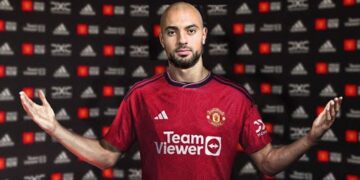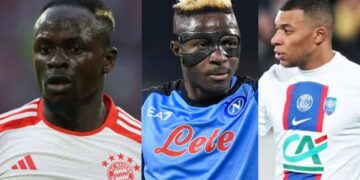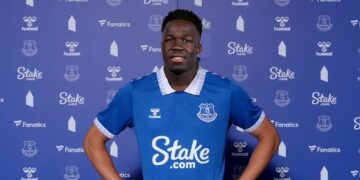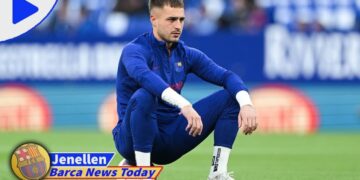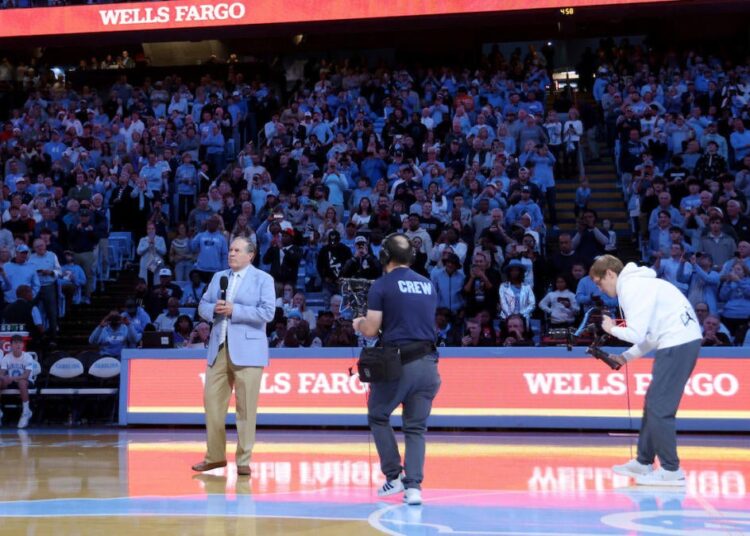Arguably the biggest sports story of December — North Carolina hiring Bill Belichick to coach its football team — could have big ripple effects in college basketball, specifically with one of the most historic programs in America.
UNC will pay Belichick $10 million (not including bonuses, keep in mind) and, according to the term sheet Belichick signed, the school is affording an additional $15 million more for assistant coaches and support staff.
That’s more than $25 million committed to UNC football before you get to the huge influx of expected revenue sharing going to the program’s players starting in 2025. That figure, according to Belichick’s publicly disclosed contract, is earmarked for $13 million, which is $7 million shy of the $20 million total being floated for UNC football’s overall NIL goal.
“There is a lot of concern of what that looks like,” a UNC source told CBS Sports. “Where does the money come from?”
Of course, $20 million is a huge amount to distribute to college football players, but Ohio State reportedly did just that this past season. And with revenue sharing expected to come next year, the entire economic model of college sports is about to undergo an even bigger revolution than the NIL phase that began only three years ago. If UNC can get to $20 million for football, it would put the program at the big-boy table in the sport, made possible primarily by a small group of ambitious boosters who have been on a mission to remake the image of UNC football, perhaps to the detriment of the school’s blue blood basketball program.
If you can afford to hire Bill Belichick, you probably need to do it, especially if you’re a school that hasn’t had a relevant football program for the majority of the past five decades. But the cost associated with such a world-shaking hire can come with unintended consequences. For many in North Carolina (specifically the majority of Tar Heels, who aren’t the richest donors), football is not just secondary, it’s on a different tier altogether than basketball, which has ruled that state for close to 80 years.
In talking to sources, the energy and enthusiasm that’s been directed toward UNC football by big boosters hasn’t nearly been matched for North Carolina basketball not only in recent months, but basically since NIL legislation began. Hubert Davis — not just any alum, but one of the best players in school history and the hand-picked successor to Roy Williams — has gotten but a sliver of the support football’s been receiving behind the scenes.
The details of how much money UNC can raise in revenue sharing loom large for North Carolina because when it comes to the school’s payouts, there’s only so much to go around. Belichick’s hiring could complicate matters for Davis’ program, but know that bringing on Belichick is about more than just changing UNC football’s image. Some in college athletics also see this as a huge swing to increase UNC’s appeal to maybe eventually earning an SEC invite down the road. That’s lofty. We’ll see. But I understand how that could be part of the calculus. (Belichick could also flame out.)
What’s happening at UNC is also happening in a lot of other places around the country: Because of the creation of NIL legislation, ultra-rich donors have been empowered to wield control over school’s athletic department in ways they couldn’t before.
“NIL has also created desperation for athletic departments and the people who cut the check get leverage on the outside and inside,” one source told CBS Sports. “Who wants to make the decisions? Who’s going to say, ‘Belichick, here’s what you get.’ Because that’s what you tell every other coach in the department. Every program, including men’s basketball, is waiting for what theirs will be, when it was just promised to Belichick.”
Not knowing what the actual operating budget will be for the next year makes it hard to recruit. This is a basketball school first, but if you peek under the hood you’ll find UNC’s publicly available fiscal numbers show it’s cash-strapped, at least in relation to where a lot of other high-majors are with NIL programs and athletic department revenue. North Carolina’s basketball facilities — including the Dean Dome — are long overdue for an upgrade. Is that happening by the end of the decade? What will become of UNC basketball through the end of this decade?
While the program is far from poor, it’s also not flush with cash. It’s one of three best programs in college basketball history, but it’s far from one of the richest in NIL. If six or seven major money players around Chapel Hill are going to hand over most of their donations to football, where does that leave UNC hoops at a time where it’s trying to keep pace with hated rival Duke and maintain national relevance? Bear in mind, all this is transpiring amid a disappointing 6-5 start to a season in which UNC began ranked in the top 10 but is falling short because it was outbid last spring on a few key portal targets.
Adding to the uncertainty is the long-term tenure of athletic director Bubba Cunningham. There’s been an abundance of scuttlebutt over how dysfunctional things are around UNC Athletics in light of how Belichick’s deal came together. Keep in mind, per multiple reports, that Belichick’s hiring was the machinations of new UNC chancellor Lee H. Roberts and UNC BOT chair John Preyer, who has been publicly critical of Cunningham and boxed him out of much of the process.
Will hiring Belichick wind up being a drain on UNC’s NIL potential in hoops? Is this a watershed moment for North Carolina’s position in college hoops? That is the growing concern around the school of Dean Smith, Michael Jordan, Roy Williams and another two dozen basketball legends. If it happens, it would mark a dramatic departure for one of the biggest and most glamorous brands in college athletics. A lot of schools have sold their basketball soul to chase football glory. Few have succeeded. Where’s the evidence to suggest North Carolina can be an exception?
Dybantsa’s commitment shows changes in CBB power dynamic
Speaking of North Carolina, last week’s Court Report story on AJ Dybantsa wound up creating quite a stir. With the news still providing buzz, here’s even more context. BYU beat out Alabama and UNC, with Dybantsa’s business adviser telling me the money offered by those three “was the same.” Dybantsa’s father also said as much on Stephen A. Smith’s podcast. That NIL money, according to sources, was approximately $5 million, which would be record-setting in college basketball.
This news was surprising to many around Alabama and North Carolina, in part because the price was beyond what plenty thought their schools could offer a 17-year-old basketball player. But Dybantsa is unlike any other prospect. Because he carries increasingly realizable name, image and likeness value, Alabama and UNC were able to take a different approach than BYU to meet that number.
Four sources intimately involved with Dybantsa’s recruitment reiterated to CBS Sports in recent days that all three schools met the asking price, albeit through different means. I initially withheld some nitty-gritty details, but after sources relayed some fallout and tumult at Bama and UNC in the wake of Dybantsa’s pledge (i.e. where did we get this $5 million in NIL for a basketball player?), let’s peel back a couple more layers.
BYU, perhaps crucially, separated from the other two because it has one of the larger self-sustained collectives in college basketball. Its pitch to Dybantsa didn’t need to fall back on an outside entity to close the deal. Many in hoops circles believe that BYU being able to pull straight from its collective was the clincher. Whether that’s true or not, only the Dybantsa family can actually say.
Regardless, Alabama and North Carolina both really wanted Dybantsa and both backed up their years-long courtships by providing paperwork to prove they could match the ~$5 million asking price, sources said. The difference is North Carolina and Alabama had to pull from three pools of money: 1) school NIL collectives, 2) projected revenue sharing from the athletic department for the 2024-25 fiscal year, and 3) significant additional future NIL money that would be paid up front by a marketing firm.
When a five-star prospect or a highly touted transfer gets recruited, schools usually don’t have the cash on hand they’re promising. It’s an oft-overlooked reality of college sports, especially as universities are grappling with a marketplace run amok. Dybantsa’s BYU pledge opened some eyes to this reality at Alabama North Carolina and beyond.
Let’s circle back to UNC and what I wrote above.
“The Belichick [hiring] has since changed things,” one source told me, re: UNC’s financials. So, had UNC landed Dybantsa, with all of the money promised there, in theory it would not have had the funds to afford $5 million for one player, plus the cost of the rest of UNC’s basketball roster and the $20 million in NIL/revenue sharing Belichick is asking for for the football team. If it’s surprising to learn that UNC doesn’t have $5 million in its collective to pay a basketball player, realize that the list of schools that do can be counted on one hand.
Regardless, the upside for Dybantsa was massive. Who knows what Carolina (now 6-5, eek) will wind up being this season, but had Dybantsa gone there, perhaps he could’ve been the guy to bring glory back to Chapel Hill. UNC pushed hard showing how previous No. 1 picks from blue bloods got filthy rich in marketing and ad deals. Ultimately, that didn’t appeal to him.
As for Alabama, it had to come from behind the most to rally the money. Nate Oats went so far as to fly on a private jet to Boston to sit down with the Dybantsas and lay out how they would get to the number: some through Alabama’s NIL collective, but more than half of it from Dybantsa’s true endorsement potential and money Alabama doesn’t currently have. Alabama struck a deal with a marketing firm that was going to afford the payments up front and make up Dybantsa’s earnings on the back end, sources said. This would have effectively split up Dybantsa’s individual marketing rights and put him on a pathway to huge earning potential in the SEC, in addition to what Alabama stands to earn and distribute in revenue sharing.
“UNC could have had $8, 9 million for him, because the ACC is letting schools decide,” said one industry source on revenue sharing. “The SEC could be just as high. Bama knew he was marketable and the marketing agency knew that he had long-term money-making potential.”
Also a factor: Given Alabama’s post-Saban challenges, keeping the Tide football atop the college football food chain only becomes all the more urgent. (Tide AD Greg Byrne alluded to this situation in a lengthy tweet Wednesday.) Keep in mind, Dybantsa could theoretically get all of his BYU NIL money before he plays for the school and before the rules are set to change on money distribution on July 1, 2025. That would not have been the case at Alabama or North Carolina.
Yet another key piece of context in all of this: Dybantsa might wind up being one-of-a-kind type of recruitment. Because when revenue sharing comes, the idea is that schools will mostly be paying athletes directly through their athletic departments. NIL deals via collectives will continue, but the bar they will have to clear is allegedly going to be much more stringent, requiring all collective agreements to be vetted and cleared. The viability of this concept has a long line of skeptics (is cheating about to come back in a big way to college sports? Stay tuned!), but if implemented, Dybantsa’s situation wouldn’t repeat for the next projected NBA superstar doing a one-year tour through college.
This is how the power balance has shifted — and never been more in flux — in college basketball. The likes of Kansas State, BYU and Louisville are operating with some of the biggest NIL budgets in the sport, while other traditional top 10-type programs are considered well outside the top tier, or even second tier, in NIL. Brave new world, and it’s set to change all over again in 2025.
Fashion trend we love: coaches upping their sweater game
First it was Rick Pitino and Jerome Tang honoring Lou Carnesecca. Last night, another sweater tribute, this one from DePaul coach Chris Holtmann.
“When you’re my age, I’m in my early 50s, there’s a group of coaches that you grew up watching and had great respect for following the teams and following the leagues,” Holtmann said postgame. “I grew up in Kentucky and I grew up watching [Carnesecca] wearing sweaters. I remember the iconic moment when he wore the sweater and John Thompson came out with a jacket and opened the sweater. He had a profound impact on the game and this university. So, we just wanted to pay our respects.”
I texted with Holtmann after Tuesday’s game. He said one of his staff members bought the sweater online for $25 from a thrift store — and sure enough, the designer was the same as Carnesecca’s famous hideous chevron-style garment. I’d love to see every visiting Big East coach follow in Holtmann’s lead and wear a sweater for their road game at St. John’s this season.
For as sweet as the Holtmann tribute was, we had even bigger sweater news in Michigan. Because for the first time since Carnesecca and Thompson, we had two coaches in matching sweaters, only this was different because it was planned and the tops were identical. Check out Greg Kampe and Tom Izzo.
How’d we get here? I caught up with Kampe late Tuesday night to get the story. Kampe and Izzo are longtime close pals, so much so that Izzo has agreed to schedule Oakland almost every year for two decades. Two years ago, Kampe decided to get into the holiday spirit and don a gaudy Grinch shirt for the Grizzlies’ game against Michigan State. That night, Izzo opted to instead wear an odd-fitting elf-suit sweater.
“He gets a technical in the game and they call him the angry elf,” Kampe said. So … there were some regrets.
Then, nearly three weeks ago, Kampe texted Izzo and asked him if he’d try it again. He had an idea.
“Let’s do something no one’s ever done. Let’s wear the exact same thing,” Kampe texted. Izzo was kinda-sorta on board. Ever the marketing mind, Kampe insisted to Izzo it would “give people a different view of you.”
Izzo still wasn’t sure then, but Kampe ordered multiple sweaters anyway and by the time they came in over the weekend, Izzo had come around. Kampe carried a bag of three Grinch sweaters into the arena Tuesday and dropped them off in Michigan State’s locker room. Kampe even told Izzo if he got a technical this time, he’d do something to get T’d up as well — so they’d both be angry Grinches.
The visual was awesome. Two men who have been friends for more than half their lives wearing these goofy, bright-green Grinch sweaters, knowing full well one of them was going to have to lose looking like that. Think about how secure you have to be to put yourself out there like this in the midst of public competition.
To top it all off, they sat at the postgame press conference together. When’s the last time we’ve ever seen this in major American sports? It doesn’t happen. One of the cooler things I’ve seen in college basketball, frankly.
It’s been a memorable 2024 for Kampe, considering his Oakland team delivered an all-time upset of No. 3 Kentucky back in March. Now this? Quite the bow on a great year. As for next year, Kampe wants to keep this going.
“I’d like to do something again, maybe come up with something different,” Kampe said. “Especially because [Izzo] didn’t get a technical this time. No one’s calling him the angry elf.”
Or, in this case, a grinch. Izzo’s team won 77-58, by the way. College hoops is the best.
@ me
Find me on Bluesky or X/Twitter and drop a Q anytime.
It would be amazing for college basketball to be guaranteed players stay at least two years, but that is never (and I mean ever) going to happen. The current arrangement isn’t perfect but it’s the best we could ask for, and I look forward to the NBA continuing to keep its age-minimum rule of 19 in place moving forward. It’s better for the NBA, improves the college game and, in most cases, is beneficial to the player.
Speaking of money, and re: what I wrote above about UNC/Belichick, Texas Tech claims it plans to give 74% of its revenue sharing distribution to football players and 17-18% to mens’ basketball, according to the Lubbock Avalanche-Journal. That’s going to equate to approximately $3.6 million for TTU hoops. And what about Title IX rights for payouts? Nobody can definitively say, it seems; 2025 is going to be a noisy, wild year for the revolutionary economic restructuring of college athletics. As for the Q above, keep in mind the private schools won’t have to divulge their number publicly. It’s a great question. I honestly have no idea. My guess is it will be a school in the SEC.
It’s not looking good (ACC is 126-72 overall, its .636 winning percentage worst of the Power Five), but keep in mind this league ranked seventh at KenPom two years ago, had one top-four seed and only sent one team to the second weekend of the NCAA Tournament. That said, we are on Week 8 of the season and the ACC has just two more wins in Quad 1 (10) than it has losses in Quad 3 (8) amongst its 18 teams. I gotta think 2022-23 was the nadir, but can it be if this season winds up not producing a Final Four team like 2023 did with Miami? Torvik projects the ACC at 4.1 bids out of 18 teams as of today.
If by “outside shot” you purely mean 3-point shooting, it’s true that Flagg has not been reliable from beyond the arc. Through 11 games, he’s 10-of-41 from deep (24.4%). It’s going to be the biggest knock on his profile heading into the draft, but I do think he’s going to develop into a solid shooter from deep. Maybe never great, but he doesn’t need to be. Flagg is the only freshman in the country who averages at least 15 points, 8 rebounds and 3 assists. All the other stuff he does makes up for his lack of a jump shot beyond 16 feet.
Well, Utah State losing at home to UC San Diego Tuesday night for its first loss puts a bit more doubt into this one. But a 10-1 start for Jerrod Calhoun is better than anyone anticipated. The Aggies won their MTE in November by knocking off Iowa, St. Bonaventure and North Texas, all top-85 KenPom teams. Currently a co-favorite in the MW with San Diego State. Something in the water in Logan.
Norlander’s news + nuggets
• The Players Era Festival keeps getting stronger. The multi-million-dollar MTE is set to add Kansas to its loaded 2025 field, sources confirmed to CBS Sports. The Jayhawks had been diligently recruited for the event dating back to the late spring.
• Here’s a stunner: Penn State is averaging 89.6 points, third most nationally. This team will shatter its program record. The previous single-season high for points per game: 78.7 in 1954-55. Only seven times across 128 seasons has Penn State put up at least 75/game, including last year’s mark of 75.1. At 9-2, Mike Rhoades’ group is pacing toward the NCAA Tournament and few seem to realize it at the moment.
• Been a bumpy debut campaign for Ohio State under Jake Diebler, the latest being Meechie Johnson stepping away for “personal reasons” in advance of OSU’s game vs. Kentucky this weekend.
• I will do a Court Report story on this come January if it remains true: Eric Dixon really might be the most valuable player in college basketball. Villanova is 8-4 and Dixon has been a stat beast in making sure the Wildcats haven’t flopped this season. He’s averaging 25.7 points (tied for No. 1) in addition to 5.9 rebounds and shooting 49.3% from 3.
• Blind item: Got word last week about a currently ranked program that’s scrambling to pay its NIL for the coming months. I wouldn’t call this a commonplace issue in college hoops, but it’s certainly one that can have behind-the-scenes repercussions if it doesn’t get resolved in a timely manner.
• Loved this from Rick Barnes, explaining how the play that won Tennessee’s game at Illinois on Saturday — to keep the Vols undefeated — was more than 40 years old and from none other than maybe the greatest high school coach ever.
• Iowa State announced a new contract with TJ Otzelberger on Tuesday that runs through 2032. A perfect marriage of coach and school.
• Josh Hubbard‘s murdering the curve for all other point guards in assist-to-turnover ratio. The Mississippi State sophomore has 39 dimes to just three turnovers in 11 games. That’s a 13.00 ratio, which is outrageous.
• Injury news nobody asked for: Xavier super senior Zach Freemantle is on the shelf AGAIN because of a “lower body injury” sustained in X’s loss at Cincinnati. No timetable on his sidelining. The 8-3 Musketeers were already limited by Lassina Traore for the season. If Sean Miller can get this team to the NCAAs, it will be one of his best coaching jobs ever.
• Brackets! With the CFP now being a 12-team affair, our college football editors had to ask us hoopheads for our picks. I was all too happy to oblige, so here’s my stab at it. I think at least one home team loses this weekend, and I think more chaos will come in the quarterfinals. Ultimately, I’m going a bit bold by picking Notre Dame to win it all. I like the idea of the first 12-team CFP champion to be a historic power in the sport. The fact it could happen while also having lost a home game in the same season to Northern Illinois is also highly appealing.
Read the full article here







